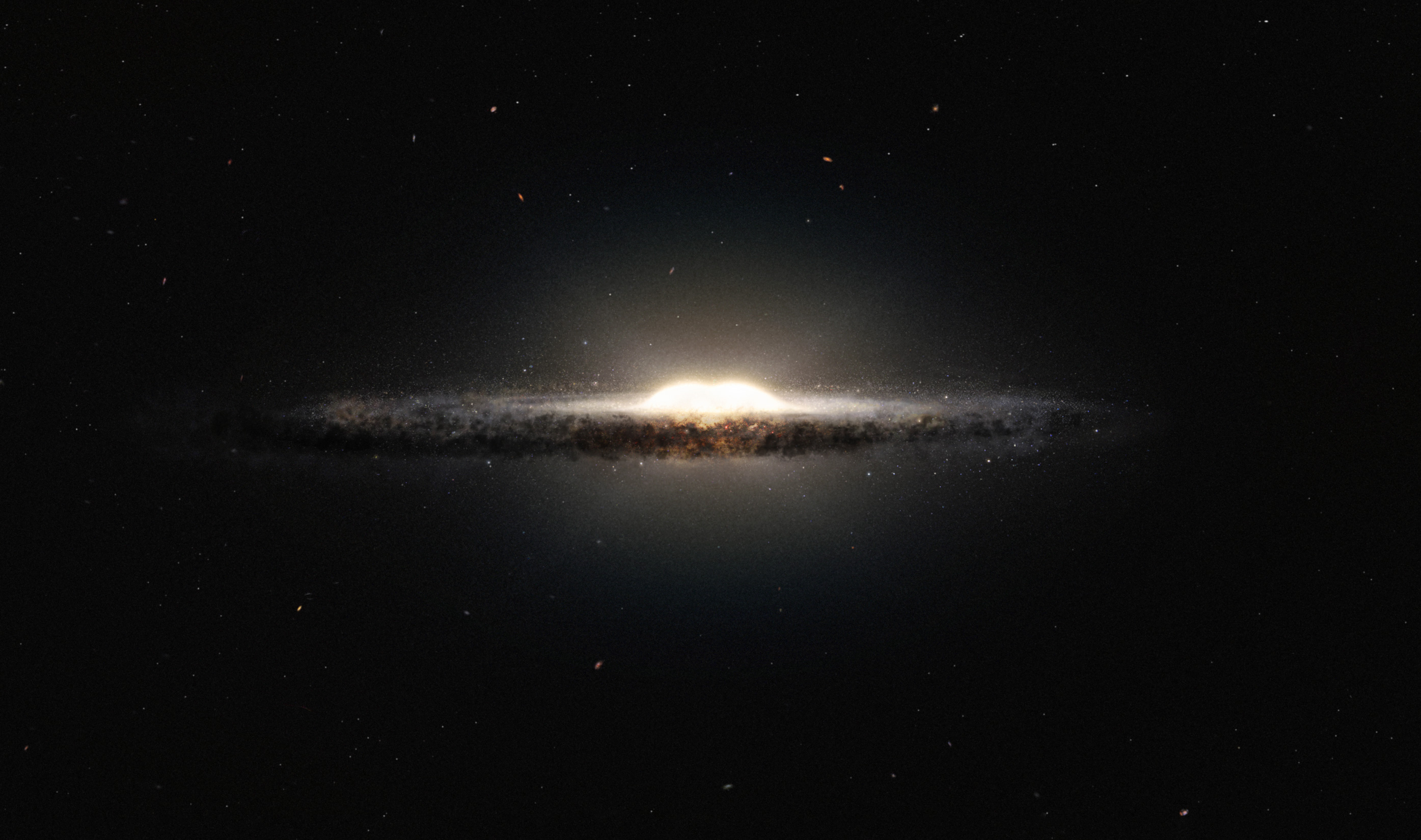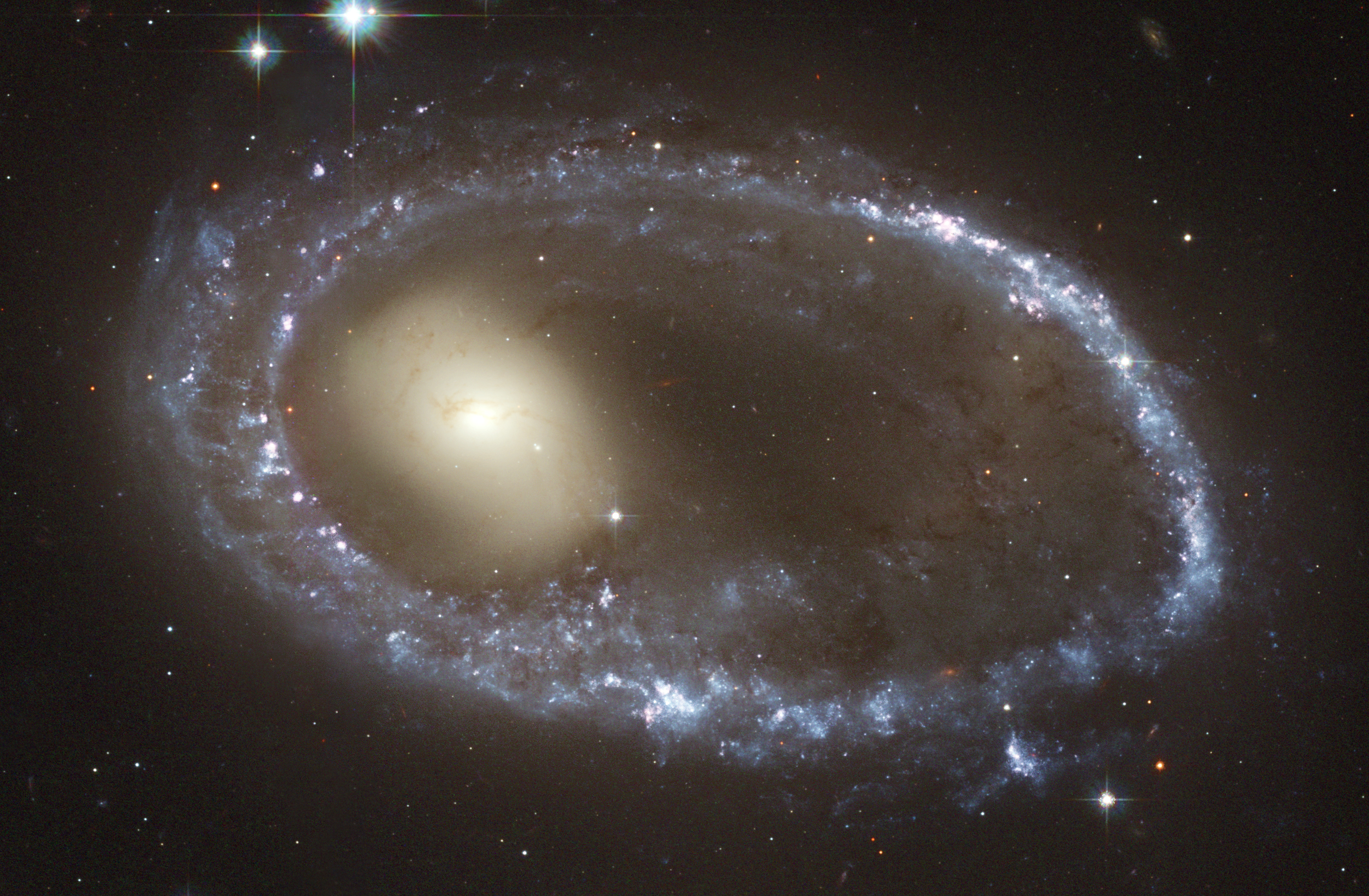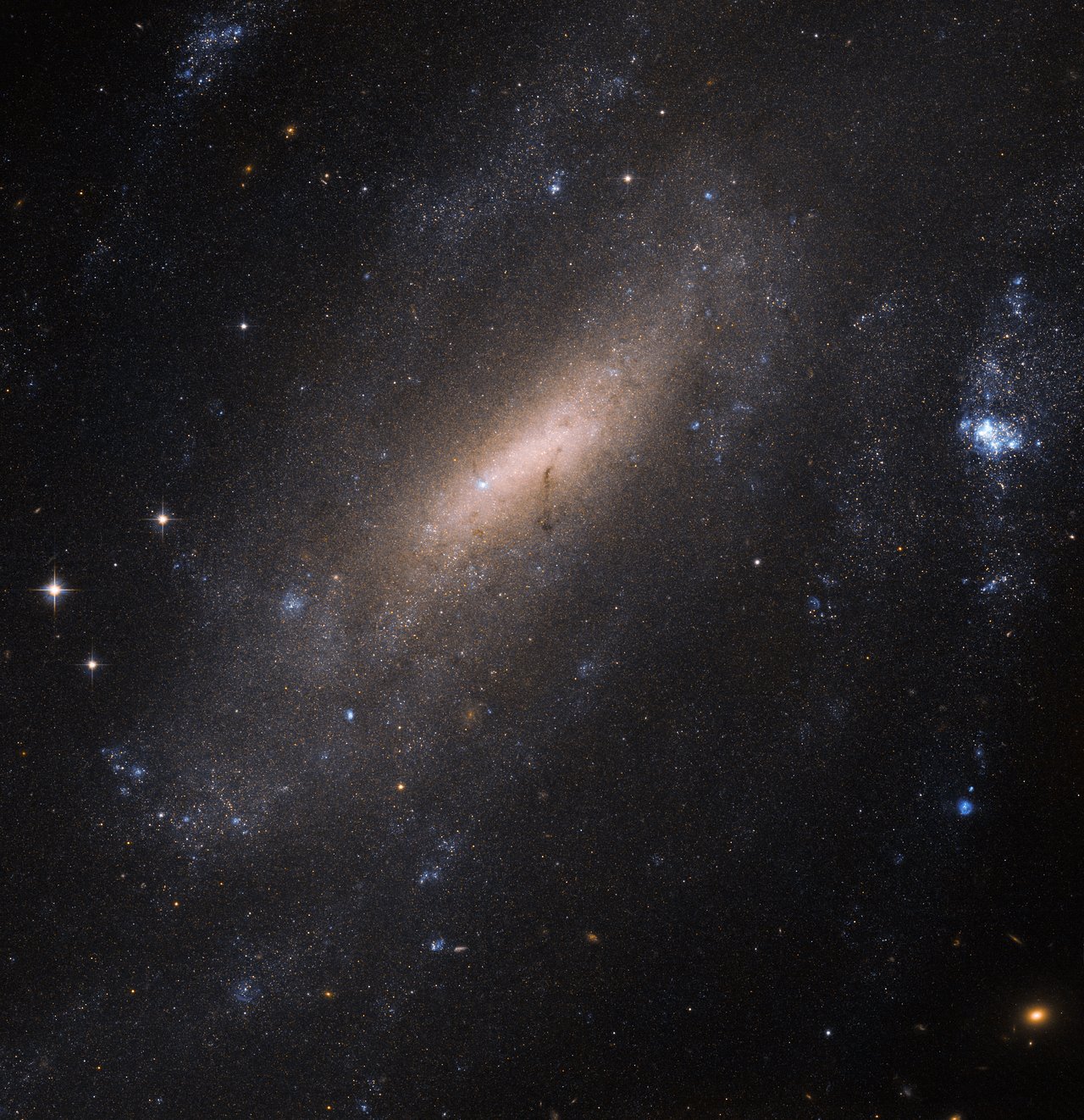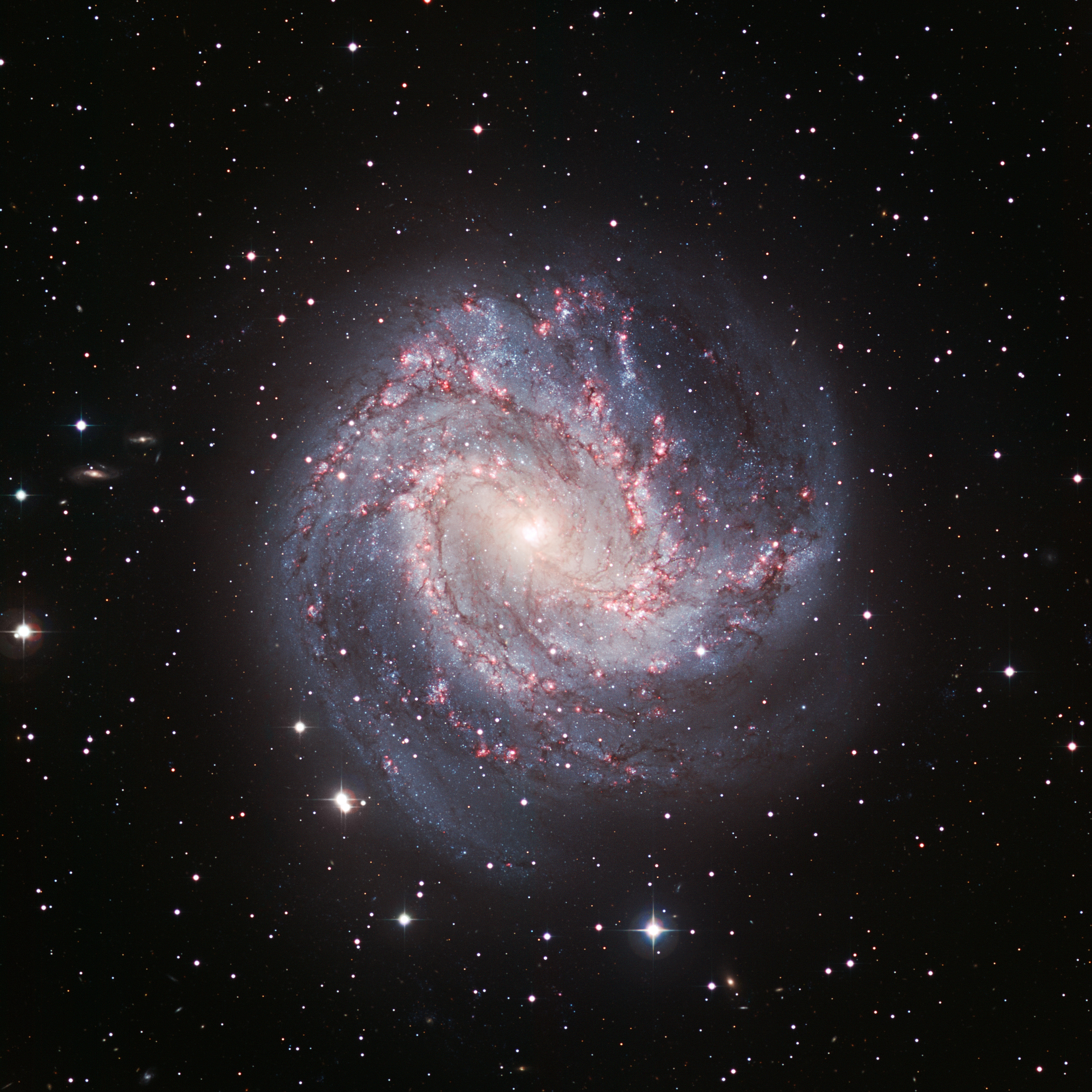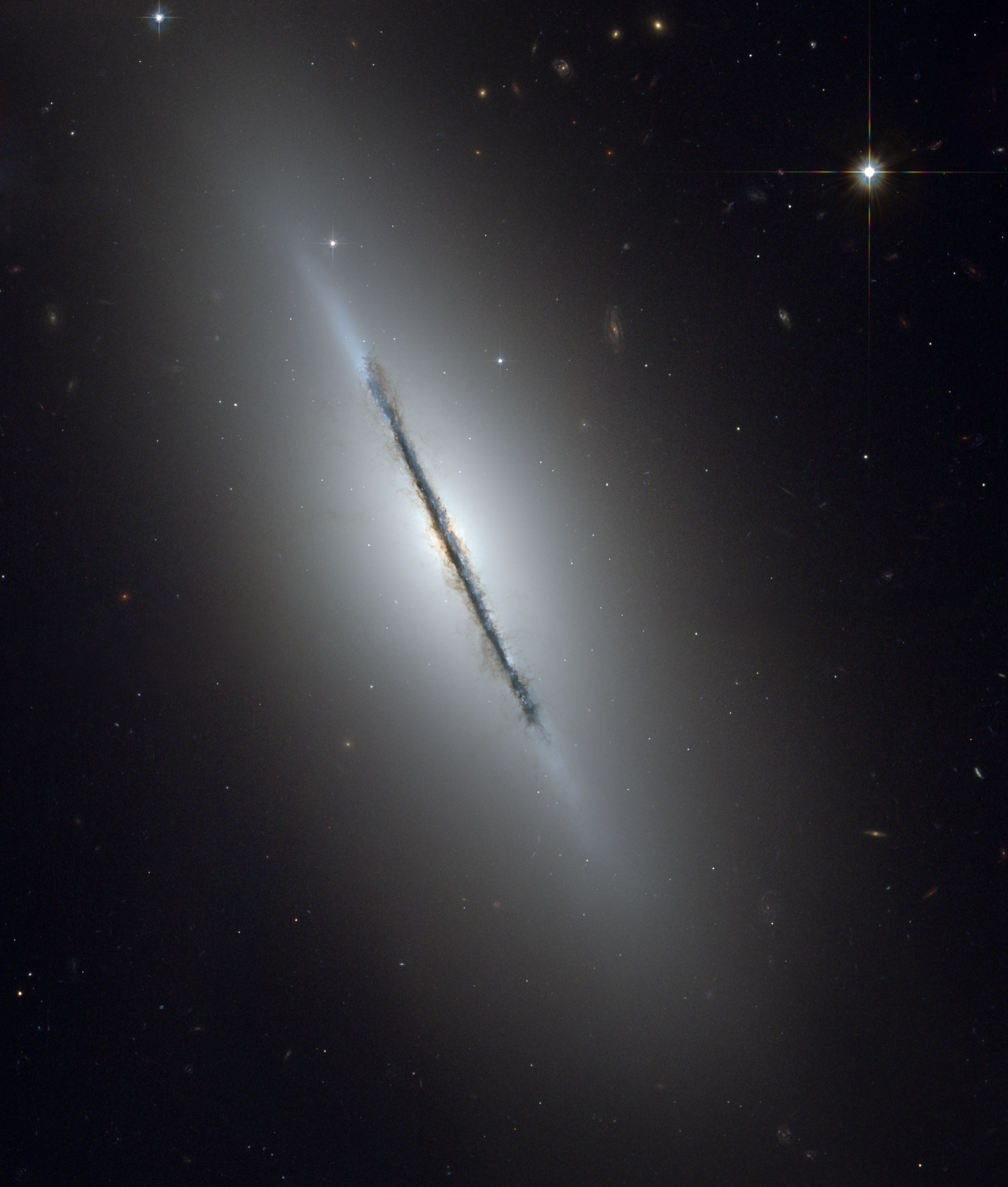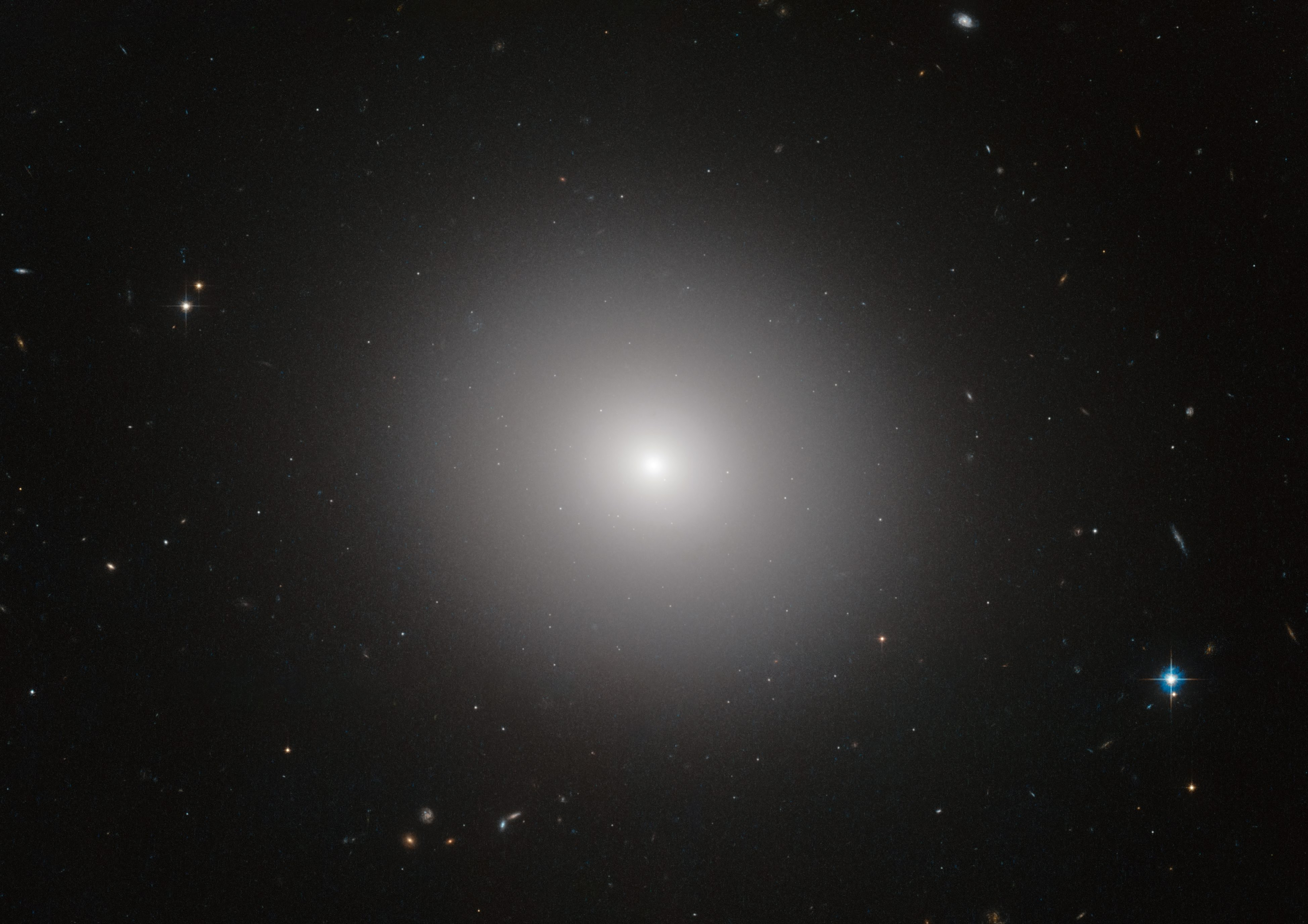|
Disc Galaxy
A disc galaxy (or disk galaxy) is a galaxy characterized by a galactic disc, a flattened circular volume of stars. These galaxies may or may not include a central non-disc-like region (a galactic bulge). Disc galaxy types include: * Spiral galaxies: ** Unbarred spiral galaxies: (types S, SA) ** Barred spiral galaxies A barred spiral galaxy is a spiral galaxy with a central bar-shaped structure composed of stars. Bars are found in about two thirds of all spiral galaxies, and generally affect both the motions of stars and interstellar gas within spiral galaxies ...: (type SB) ** Intermediate spiral galaxies: (type SAB) * Lenticular galaxies: (types E8, S0, SA0, SB0, SAB0) Galaxies that are not disc types include: * Elliptical galaxies: (type dE) * Irregular galaxies: (type dI) See also * thick disk * thin disk References {{DEFAULTSORT:Disc Galaxy Galaxy morphological types ... [...More Info...] [...Related Items...] OR: [Wikipedia] [Google] [Baidu] |
Ngc253 2mass Barred Spiral
NGC commonly refers to: * New General Catalogue of Nebulae and Clusters of Stars, a catalogue of deep sky objects in astronomy NGC may also refer to: Companies * NGC Corporation, name of US electric company Dynegy, Inc. from 1995 to 1998 * National Gas Company of Trinidad and Tobago, state-owned natural gas company in Trinidad and Tobago * National Grid plc, a former name of National Grid Electricity Transmission plc, the operator of the British electricity transmission system * Northrop Grumman Corporation, aerospace and defense conglomerate formed from the merger of Northrop Corporation and Grumman Corporation in 1994 * Numismatic Guaranty Corporation, coin certification company in the United States Other uses * National Gallery of Canada, art gallery founded in 1880 in Ottawa, Canada * National Geographic, documentary and reality television channel established in the United States in 2001 formerly called National Geographic Channel * Native Girls Code, US non-profit org ... [...More Info...] [...Related Items...] OR: [Wikipedia] [Google] [Baidu] |
Galaxy
A galaxy is a system of stars, stellar remnants, interstellar gas, dust, dark matter, bound together by gravity. The word is derived from the Greek ' (), literally 'milky', a reference to the Milky Way galaxy that contains the Solar System. Galaxies, averaging an estimated 100 million stars, range in size from dwarfs with less than a hundred million stars, to the largest galaxies known – supergiants with one hundred trillion stars, each orbiting its galaxy's center of mass. Most of the mass in a typical galaxy is in the form of dark matter, with only a few percent of that mass visible in the form of stars and nebulae. Supermassive black holes are a common feature at the centres of galaxies. Galaxies are categorized according to their visual morphology as elliptical, spiral, or irregular. Many are thought to have supermassive black holes at their centers. The Milky Way's central black hole, known as Sagittarius A*, has a mass four million times greater than ... [...More Info...] [...Related Items...] OR: [Wikipedia] [Google] [Baidu] |
Galactic Disc
A galactic disc (or galactic disk) is a component of disc galaxies, such as spiral galaxies and lenticular galaxies. Galactic discs consist of a stellar component (composed of most of the galaxy's stars) and a gaseous component (mostly composed of cool gas and dust). The stellar population of galactic discs tend to exhibit very little random motion with most of its stars undergoing nearly circular orbits about the galactic center. Discs can be fairly thin because the disc material's motion lies predominantly on the plane of the disc (very little vertical motion). The Milky Way's disc, for example is approximately 1 kly thick but thickness can vary for discs in other galaxies. Stellar component Exponential surface brightness profiles Galactic discs have surface brightness profiles that very closely follow exponential functions in both the radial and vertical directions. Radial profile The surface brightness radial profile Radial is a geometric term of location which ... [...More Info...] [...Related Items...] OR: [Wikipedia] [Google] [Baidu] |
Star
A star is an astronomical object comprising a luminous spheroid of plasma held together by its gravity. The nearest star to Earth is the Sun. Many other stars are visible to the naked eye at night, but their immense distances from Earth make them appear as fixed points of light. The most prominent stars have been categorised into constellations and asterisms, and many of the brightest stars have proper names. Astronomers have assembled star catalogues that identify the known stars and provide standardized stellar designations. The observable universe contains an estimated to stars. Only about 4,000 of these stars are visible to the naked eye, all within the Milky Way galaxy. A star's life begins with the gravitational collapse of a gaseous nebula of material composed primarily of hydrogen, along with helium and trace amounts of heavier elements. Its total mass is the main factor determining its evolution and eventual fate. A star shines for most of its active life due t ... [...More Info...] [...Related Items...] OR: [Wikipedia] [Google] [Baidu] |
Galactic Bulge
In astronomy, a galactic bulge (or simply bulge) is a tightly packed group of stars within a larger star formation. The term almost exclusively refers to the central group of stars found in most spiral galaxies (see galactic spheroid). Bulges were historically thought to be elliptical galaxies that happened to have a disk of stars around them, but high-resolution images using the Hubble Space Telescope have revealed that many bulges lie at the heart of a spiral galaxy. It is now thought that there are at least two types of bulges: bulges that are like ellipticals and bulges that are like spiral galaxies. Classical bulges Bulges that have properties similar to those of elliptical galaxies are often called "classical bulges" due to their similarity to the historic view of bulges. These bulges are composed primarily of stars that are older, Population II stars, and hence have a reddish hue (see stellar evolution). These stars are also in orbits that are essentially random ... [...More Info...] [...Related Items...] OR: [Wikipedia] [Google] [Baidu] |
Spiral Galaxy
Spiral galaxies form a class of galaxy originally described by Edwin Hubble in his 1936 work ''The Realm of the Nebulae''Alt URL pp. 124–151) and, as such, form part of the Hubble sequence. Most spiral galaxies consist of a flat, rotating disk containing stars, gas and dust, and a central concentration of stars known as the bulge. These are often surrounded by ... [...More Info...] [...Related Items...] OR: [Wikipedia] [Google] [Baidu] |
Unbarred Spiral Galaxy
An unbarred spiral galaxyAstronomy Pictures(accessed 18 April 2010) is a type of spiral galaxy without a central bar, or one that is not a barred spiral galaxy. It is designated with an SA in the galaxy morphological classification scheme. Barless spiral galaxies are one of three general types of spiral galaxies under the ''de Vaucouleurs system'' classification system, the other two being intermediate spiral galaxy and barred spiral galaxy. Under the ''Hubble tuning fork'', it is one of two general types of spiral galaxy, the other being barred spirals. Grades Unbarred lenticular galaxy An unbarred lenticular galaxy is a lenticular Lenticular is an adjective often relating to lenses. It may refer to: * A term used with two meanings in botany: see * Lenticular cloud, a lens-shaped cloud * Lenticular galaxy, a lens-shaped galaxy * Lenticular (geology), adjective describing a ... version of an unbarred spiral galaxy. They have the Hubble type of SA0. An example ... [...More Info...] [...Related Items...] OR: [Wikipedia] [Google] [Baidu] |
Barred Spiral Galaxy
A barred spiral galaxy is a spiral galaxy with a central bar-shaped structure composed of stars. Bars are found in about two thirds of all spiral galaxies, and generally affect both the motions of stars and interstellar gas within spiral galaxies and can affect spiral arms as well. The Milky Way Galaxy, where the Solar System is located, is classified as a barred spiral galaxy. Edwin Hubble classified spiral galaxies of this type as "SB" (spiral, barred) in his Hubble sequence and arranged them into sub-categories based on how open the arms of the spiral are. SBa types feature tightly bound arms, while SBc types are at the other extreme and have loosely bound arms. SBb-type galaxies lie in between the two. SB0 is a barred lenticular galaxy. A new type, SBm, was subsequently created to describe somewhat irregular barred spirals, such as the Magellanic Clouds, which were once classified as irregular galaxies, but have since been found to contain barred spiral structures. Among o ... [...More Info...] [...Related Items...] OR: [Wikipedia] [Google] [Baidu] |
Intermediate Spiral Galaxy
An intermediate spiral galaxy is a galaxy that is in between the classifications of a barred spiral galaxy A barred spiral galaxy is a spiral galaxy with a central bar-shaped structure composed of stars. Bars are found in about two thirds of all spiral galaxies, and generally affect both the motions of stars and interstellar gas within spiral galaxies ... and an unbarred spiral galaxy. It is designated as SAB in the galaxy morphological classification system devised by Gerard de Vaucouleurs. Subtypes are labeled as SAB0, SABa, SABb, or SABc, following a sequence analogous to the Hubble sequence for barred and unbarred spirals. The subtype (0, a, b, or c) is based on the relative prominence of the central bulge and how tightly wound the spiral arms are. Examples References * Galaxy morphological types {{Spiral-galaxy-stub ... [...More Info...] [...Related Items...] OR: [Wikipedia] [Google] [Baidu] |
Lenticular Galaxy
A lenticular galaxy (denoted S0) is a type of galaxy intermediate between an elliptical (denoted E) and a spiral galaxy in galaxy morphological classification schemes. It contains a large-scale disc but does not have large-scale spiral arms. Lenticular galaxies are disc galaxies that have used up or lost most of their interstellar matter and therefore have very little ongoing star formation. They may, however, retain significant dust in their disks. As a result, they consist mainly of aging stars (like elliptical galaxies). Despite the morphological differences, lenticular and elliptical galaxies share common properties like spectral features and scaling relations. Both can be considered early-type galaxies that are passively evolving, at least in the local part of the Universe. Connecting the E galaxies with the S0 galaxies are the ES galaxies with intermediate-scale discs. Morphology and structure Classification Lenticular galaxies are unique in that they have a vis ... [...More Info...] [...Related Items...] OR: [Wikipedia] [Google] [Baidu] |
Elliptical Galaxy
An elliptical galaxy is a type of galaxy with an approximately ellipsoidal shape and a smooth, nearly featureless image. They are one of the four main classes of galaxy described by Edwin Hubble in his Hubble sequence and 1936 work ''The Realm of the Nebulae'', with their intermediate scale disks, a subset of the "early-type" galaxy population. Most elliptical galaxies are composed of older, low-mass stars, with a sparse interstellar medium and minimal star formation activity, and they tend to be surrounded by large numbers of globular clusters. Elliptical galaxies are believed to make up approximately 10–15% of galaxies in the Virgo Supercluster, and they are not the dominant type of galaxy in the universe overall. They are preferentially found close to the centers of galaxy clusters. Elliptical galaxies range in size from dwarf ellipticals with tens of millions of stars, to supergiants of over one hundred trillion stars that dominate their galaxy clusters. Originall ... [...More Info...] [...Related Items...] OR: [Wikipedia] [Google] [Baidu] |
Irregular Galaxy
An irregular galaxy is a galaxy that does not have a distinct regular shape, unlike a spiral or an elliptical galaxy. Irregular galaxies do not fall into any of the regular classes of the Hubble sequence, and they are often chaotic in appearance, with neither a nuclear bulge nor any trace of spiral arm structure. Collectively they are thought to make up about a quarter of all galaxies. Some irregular galaxies were once spiral or elliptical galaxies but were deformed by an uneven external gravitational force. Irregular galaxies may contain abundant amounts of gas and dust. This is not necessarily true for dwarf irregulars. Irregular galaxies are commonly small, about one tenth the mass of the Milky Way galaxy. Due to their small sizes, they are prone to environmental effects like crashing with large galaxies and intergalactic clouds. Types There are three major types of irregular galaxies: * An Irr-I galaxy (Irr I) is an irregular galaxy that features some structure but not ... [...More Info...] [...Related Items...] OR: [Wikipedia] [Google] [Baidu] |



